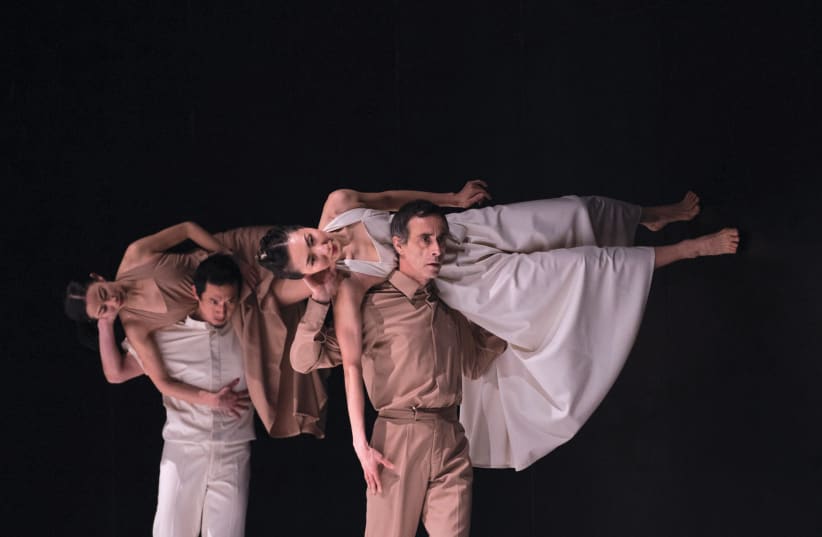Sasha Waltz, one of the more influential German choreographers for the past quarter of a century, is known for her daring, singular creations which deal with powerful visuals and movement research from new angels. Her last visit to Israel was in 2001 when the company presented one of her major creation at that time - Korper.
‘Continu’ (2012)is a two-act dance work with varied tempers; the first, is full-bodied, intense, ominous and long enough to stand as a satisfying full show. The second act is much shorter, brighter and emotionally lighter, and calms down the dramatic effect of the first act, yet leaves a faint trace behind.
The company has an international cast of 22, including three Israeli dancers. The cast is diversified in terms of background and age, each with apparent individual personality.
The seven female dancers at the opening scene were elegantly clad in long black dresses. A set of drums was positioned on stage left, played by outstanding percussionist Robyn Schlkovsky (b. 1953) that dancingly hit the drums to music by Iannis Xenakis. The dance reacts to the music, echoing its pulses with curving lines and rippling muscles.
This introduction is a corridor to the main section, influenced by radical composer Edgar Varese’s score Arcana (1927). His powerful compositions were way ahead of his time as he promoted using electronically produced music a century ago.
With the dimly lit stage bare, large groups move and regroup, setting a grave mood soaked with apprehension and fear. Faint sirens sounds are chillingly woven into the music. The scene implies complex situations in dire times; it could be fear of persecution or incarceration as the sounds of drums translates to approaching danger.
In an exceptionally chilling scene, the entire cast stands still against the back wall which is covered with metal plates. A single person shouts a syllable or two, and one of the people drops dead. One by one, they all crumble and collapse.
Waltz managed to reach the most dramatic effects by using basic elements of light, sound – or lack of it – and relatively simple movement compositions on stage’s space. She managed to create complex situations layered with undercurrents, dealing with basic components of the human entity, its needs, fears, aspirations and self expression, by stripping the dancers of unnecessary frills such as ego and blind obedience. Instead she deals exclusively with the bare necessities to enrich her art work.
Deeply touched, the audience responded with a standing ovation.
